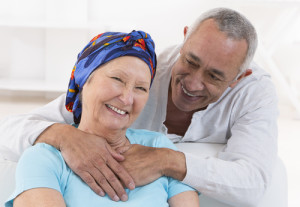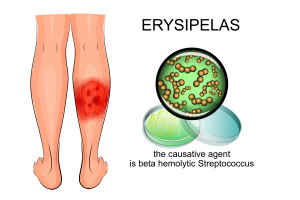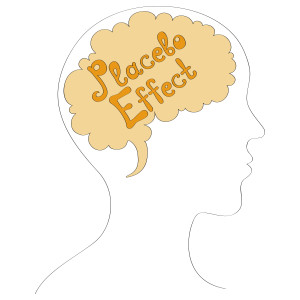SPONTANEOUS REMISSION OF CANCER
by Ronald Peters, MD, MPH
“What one man can do, another man can do.”
The Bridge, by Nikolai Chukovski
 Perhaps the most powerful demonstration of the natural healing power of the mind and body is the “spontaneous” disappearance of a normally fatal disease such as metastatic cancer. This stunning event has been recorded by medical doctors repeatedly in the annals of medicine.
Perhaps the most powerful demonstration of the natural healing power of the mind and body is the “spontaneous” disappearance of a normally fatal disease such as metastatic cancer. This stunning event has been recorded by medical doctors repeatedly in the annals of medicine.
Without “adequate” treatment, and sometimes no treatment at all, cancer and other diseases simply go away. While the patient celebrates, befuddled doctors find no way to fit the event into their belief systems and most simply ignore this remarkable event. However, a few have looked into spontaneous remission, thereby contributing to the emerging science of mindbody healing.
Probably the most common evidence for spontaneous healing is the medically documented case report on a single patient. For example, a patient undergoes exploratory surgery for cancer and the surgeon finds widespread disease. The patient is sewn up and sent home to die, but returns ten years later, often for some other medical problem.
The current physician reviews the medical record and finds the previous surgical report, along with X-ray and other documentation of cancer. He repeats the diagnostic work-up and can find no current evidence of the “deadly disease”.
Spontaneous mindbody healing does not only apply to cancer, but is found in a wide range of diseases, including infections, trauma, diabetes, heart disease, skin disorders, depression and many others.
Writing in Spontaneous Remission, An Annotated Bibliography, Brendan O’Regan and Caryle Hirshberg provide 334 references for spontaneous remission for diseases other than cancer, as well as a summary of the research on cancer regression.
Considerations of spontaneous remission, must also include cases of “miraculous healing” such as those reported in the renown healing waters of Lourdes in Southern France. The International Medical Commission of Lourdes has medically documented 65 cures which, although a small percentage, it does signal the unique power of spiritual healing.
SCIENTIFIC REVIEWS OF SPONTANEOUS REMISSION
Beginning in 1903, there have 1385 scientific articles and case reports on spontaneous remission. Of these 1051 are cancer cases and 334 are for diseases other than cancer. Every type of cancer is found in this literature with a fairly even distribution of various cell types.
Quietly disturbed by the phenomenon of instant cure, the authors pay detailed attention to verifying the diagnosis of disease, mostly cancer, and then the evidence showing remission, or disappearance of the disease. In most of them there is speculation as to the reasons for the spectacular and unexpected healing to occur.
The following is a summary of commentaries and possible explanations for spontaneous remission:
In 1909 Dr. Sampson Handley presenting to the Royal College of Surgeons, stated that he found no evidence that any cancer treatment at that time provided substantial improvement over doing no treatment at all.
He advocated that the best treatment for cancer is “to promote the body’s own natural ability to counteract the effects of cancer”.
In 1933, Dr. DeCourcy reviewed the literature on spontaneous remission and wrote:
“There are no accidents in nature. . . . I believe it is of the very first importance to give close study to cases of this kind with a view to gaining an insight, in possible, into Nature’s methods of healing and to discover what can be done to make her work easier.”
In 1950 Dr. Engelburt Dunphy published four case histories and then concluded:
“The occurrence of spontaneous regressions renders untenable the hypothesis that ‘cancer is a progressive, lawless, autonomous growth’ . . .” Also, if there are factors that lead to progression of tumors, then “the alteration or withdrawal of these factors . . . can result in dissolution of the tumor.”
In 1952, pathologist Dr. Fred Stewart speaking at the University of Texas MD Anderson Hospital stated the following:
“Thinking in the cancer field is perhaps too largely directed to methods of artificial destruction of the cancer cell either by its radical removal or its chemical destruction. There has not been enough thought given to biological control by the host.”
In 1966 pathologist William Boyd presented summaries of 98 cases of spontaneous regression of cancer and wrote in his conclusion:
“The wide fluctuations in the growth of tumors are due primarily to changes in the resistance of the organism (patient) and not to changes in the virulence of the tumor. It is the concept of control that is central to the phenomenon of spontaneous regression.”
In 1966, Tilden Everson and Warren Cole reviewed the world literature on spontaneous remission in cancer, citing 202 well documented cases. In their discussion of the significance of the data they wrote:
1. The existence of spontaneous regression of cancer, in at least some cases supports the concepts of biologic control of cancer and reinforces the hope that a more satisfactory method of treating cancer than surgery or irradiation may be found.
2. The occurrence of spontaneous regression of cancer demonstrates need for caution in assessing the value of chemotherapeutic and unorthodox therapeutic measures in isolated ‘cures’ of cancer.
3. The possibility of spontaneous regression of cancer must be considered in the evaluation of the prognosis of certain cancers.
4. The remote possibility of spontaneous regression of cancer may be of some therapeutic value in the patient with cancer that is not amenable to surgical or radiation treatment.
In 1974, a World Conference on Spontaneous Remission held at John Hopkins University School of Medicine brought many researchers together to consider this phenomenon that so radically disturbed the medical community. From a mindbody perspective the highlights were:
Most of the papers presented at the conference reviewed the possible mechanisms for a “perfect storm” of immunological events that could overpower the cancer and lead to remission. However, the details of such an immune uprising remained speculative.
Dr. Rene Matrovito introduced case reports of cancer developing after a severe psychological trauma. He also noted that “almost no cancer patients have schizophrenia”, and reviewed references to spontaneous regression following religious conversion and prayer.
Drs. Sindelar and Ketcham suggested that endocrine factors, psychological factors, trauma and stress, infection and fever, and changes in diet may be some of the factors that cause spontaneous regression.
Dr. Basil Stoll, writing in Mind and Cancer Prognosis, published in 1979 wrote:
“. . . psychological triggering factors may be involved in some cases, because both immunological and endocrinological changes can be triggered off by cerebral cortical activity through the mediation of the hypothalamic (emotional) centres.”
In 1982 Dr Franklin published an article that appeared in Prolonged Arrest of Cancer that contained the following quote:
“The mind exerts an influence over the body and its internal environment in ways that are not understood” and cited the case of a nun with pancreatic cancer who recovered flowing biopsy and the prayers of Mother Superior. In the same publication, Anslie Meares reported a case of metastatic osteogenic sarcoma that was controlled with mediation.
SEARCHING FOR A MECHANISM
Having convinced themselves that spontaneous regression of cancer does indeed exist and with surprising frequency, doctors must figure out how it happens.
 In the early 1900s, Dr. William Coley, a New York surgeon found that some of his cancer patients experienced remission of their cancer when they contracted erysipelas, a bacterial infection caused by Streptococcus pyogenes. The fever associated with the infection somehow marshaled the immune system to rise up and kill the cancer.
In the early 1900s, Dr. William Coley, a New York surgeon found that some of his cancer patients experienced remission of their cancer when they contracted erysipelas, a bacterial infection caused by Streptococcus pyogenes. The fever associated with the infection somehow marshaled the immune system to rise up and kill the cancer.
He then developed “Coley’s Toxin” therapy whereby a bacterial extract was injected into the patient, producing a severe fever and in a significant number of his cancer patients the tumor regressed. However, chemotherapy and radiation appeared on the therapeutic landscape and Dr. Coley’s treatments were mostly forgotten.
The majority of speculation since the 1940s has focused on immunological theories, which is no easy task since medical understanding of the mysteriously complex immune system is in its infancy. An internal army of trillions of cells marching to the signals of communication molecules, called cytokines, and governed by thoughts and emotions, both conscious and unconscious, makes the immune system hard to map and difficult to explain, to say the least.
Nonetheless, medical scientists offered a range of speculation for spontaneous remission based upon some combination of angiogenesis mechanisms, oncogene function and a host of growth factors and signaling molecules, such as tumor necrosis factor alpha, alpha interferon, transforming growth factor beta, lymphokine activating cells and many more. As with many areas of research into the wisdom of the body, it is difficult to see the forest for all the trees.
ENTER THE MIND – CONSIDERING THE PLACEBO EFFECT
Writing in 1957, Dr. Philip West described a patient of his with metastatic cancer who pleaded for experimental drug called Krebozian, which was touted in the press as a “wonder drug”.
After one dose of the medication, the patient’s cancer “melted like snowballs on a hot stove”. The patient recovered fully and resumed piloting his own plane. When the man later read in the news that Krebozian was “worthless” as a cancer therapy, his cancer once again began to spread in his body and he was hospitalized, dying a few days later.
 A placebo is a treatment that produces a positive result simply because the patient believes the treatment will work. The placebo itself has no intrinsic medicinal properties to produce that benefit.
A placebo is a treatment that produces a positive result simply because the patient believes the treatment will work. The placebo itself has no intrinsic medicinal properties to produce that benefit.
Placeboes have been shown in endless medical studies to produce a 35-45 percent improvement in whatever medical condition is being treated. Even doctors who are otherwise skeptical about the psychological aspects of illness accept, and often utilize, the power of placeboes.
The placebo effect has been demonstrated even more dramatically with surgery. Consider the following experiment conducted in 1958. At that time, obstructive coronary artery disease was treated by sewing the internal mammary artery, an artery in the chest wall, into the heart to improve blood flow to it and thereby reduce angina pain.
Half the patients in the experiment received the full surgical procedure while the other half received only a skin incision with no arterial graft. Of course, the patients weren’t let in on the ruse — both groups believed they had received the same, complete surgery.
Following the operation, the two patient groups showed equal improvement in their angina symptoms, required less of the medication nitroglycerin (a common treatment for angina), and performed better on treadmill stress tests. In fact, clinical outcomes across the board were exactly the same for both groups.
In 1981, a similar project was carried out with patients in Denmark suffering from Meniere’s disease. The symptoms of Meniere’s disease can be very debilitating with constant dizziness, buzzing in the ears, and eventual deafness. Thirty patients underwent surgery to receive an inner ear shunt to treat the symptoms, but unbeknownst to them, only fifteen actually received a shunt. At the three-year follow-up point, 70 percent of the patients in both groups were experiencing significant symptom relief.
Numerous other studies have confirmed the power of placebos, which is really the power of belief. For example, one third of people get as much pain relief from placebos as they do from morphine. In other research, placebos:
- Reduced gastric acidity in ulcer disease;
- Proved more effective than aspirin and cortisone in the treatment of rheumatoid arthritis;
- Lowered blood pressure; and
- Suppressed coughs as effectively as codeine.
- Produced pain relief in osteoarthritic knees comparable to traditional arthroscopic surgery.
In a 1974 Scientific American article entitled the “Ethics of Giving Placebos,” the authors stated that “35-45 percent of all prescriptions are for substances that are incapable of having an effect on the condition for which they are prescribed.” Dr. Halstead Holman of Stanford University has noted that “three of four of the most commonly prescribed drugs treat no specific illness.”
Indeed, the placebo research is as disturbing to the mindset of physicians as is spontaneous disappearance of “lethal” cancer. Doctors are trained in “molecular medicine” which is based on the belief that the body is a sophisticated machine and you can influence the biochemical and physiological dance of molecules, cells and organs with other molecules such as drugs as well as surgery. The notion that successful medical therapies may be in large part only due to the body’s natural self repair systems mobilized by the belief that the treatment is working is disconcerting.
CONSCIOUSNESS AND SPONTANEOUS CANCER REMISSION
Hypnosis
Hypnosis has been reported in the medical literature as a cure for many diseases, from asthma to warts. An article published in 1846 describes a woman with breast cancer who was hypnotized by La Roy Sunderland on several occasions prior to surgery. At surgery, the doctors could find no evidence of her tumor.
Meditation
 Ainslie Meares (1910-1986), an unorthodox Australian psychiatrist, reported several cases of remission in various types of cancer using a technique of meditation that he called “atavistic regression”. He theorized in his writings that mediation and hypnosis are slightly different manifestations of the same process. He writes in this book “Life Without Stress“:
Ainslie Meares (1910-1986), an unorthodox Australian psychiatrist, reported several cases of remission in various types of cancer using a technique of meditation that he called “atavistic regression”. He theorized in his writings that mediation and hypnosis are slightly different manifestations of the same process. He writes in this book “Life Without Stress“:
In 1976 in the Medical Journal of Australia, he first reported on the regression of cancer following intensive meditation. This step away from orthodox medicine’s cancer regime of chemotherapy, radiotherapy, and surgery, brought him into direct conflict with the medical profession. However, in 1981 the Lancet published his findings on regression in the absence of any orthodox treatment and eventually his meditative techniques became accepted by the medical profession as a whole, with the exception of the oncologists.
Dr. Meares believed that meditation was most effective when pared to its essence, as simple stillness, rather than as a meditative technique.
The extensive modern scientific research on meditation is summarized by the following:
EFFECTS ON THE BODY
- Lowers metabolic rate
- Lowers blood pressure and heart rate
- Improves weight loss
- Reduces cardiac output creating rest for the heart
- Lowers lactic acid in blood
- Reduces skin resistance
- Improves immune system
- Reduces asthma
- Reduces need for alcohol and cigarettes
- Reduces need for pain meds
- Improves resistance to disease
EFFECTS ON THE MIND
- Produces alpha brain waves
- Improved stress recovery
- Improves memory
- Improves coordination
- Increases sensitivity of perception
- Improves intelligence, including high school students
- Improves learning ability
- Improves academic performance
- Develops personality of self-actualization
- Decreased anxiety
- Decreased depression
- Improves mental health
- Improves concentration and focus
Camille Maurine and Lorin Roche write about meditation in a more gentle and persuasive manner in their book, Meditation 24/7 with the following:
- Your muscles and nerves relax throughout your body
- You are able to rest deeply and recover quickly from fatigue
- You release stress from the nervous system and reduce stress related ailments
- You strengthen your immune system to help prevent infections and cancer
- You lower your blood pressure and heart rate
- Your senses become more acute and you become more alive
- Your ability to experience physical pleasures increases
MENTAL BENEFITS
- You see and hear your own thoughts more clearly
- You become more alert
- You are calmer under pressure
- You are able to shift your perspective quickly from a narrow focus to the big picture
- You perceive more beauty in life
- You sense how things connect and work together
- You have more choice in how you respond to the world
- You are more open to new experiences
- You become more accepting of individuality
EMOTIONAL BENEFITS
- You accept all your emotions
- You increase your empathy for others
- You feel more connected with those that you love
- Life seems more harmonious
- You are able to give and receive pleasure, attention and love
- You let go of resentment and hurt more easily
- You become a better friend due to your improved ability to listen
- You establish better boundaries in your life
- You have a specific time and method to feel and heal your pain and emotional wounds
SPIRITUAL BENEFITS
- You have a sense of oneness with the world
- You experience more wonder and feel more alive
- You tune into your essence, your Soul
- You are more grateful
- You express more compassion
- You feel that life is sacred
- You come to terms with the mystery of birth and death
- You develop a stronger sense of meaning in your life
Group Support
Starting with Dr. David Spiegel in 1989 and followed by many other researchers, it has been shown that cancer patients live longer and feel better when they participate in social support groups and are encouraged to express their emotions about their illness and about life in general.
Faith, accepting responsibility and changing perspective
In 1975, Dr. Ikemi and his team analyzed 5 cases of cancer remission and found certain common features. Each person seemed “to have overcome cancer by accepting responsibility for resolving such a crisis for themselves.” Four of the patients had a “passionate religious faith” and all cases reported that they had left their outcome to fate or the will of God. Also, each person showed a dramatic change in their outlook on life.
In 1987, Drs van Baalan, de Vries and Gondrie published research on 6 cases of spontaneous regression of cancer and found that all of the patients showed increased autonomous behavior and significant changes in their attitudes toward:
- Their disease
- Their treatment
- Relationships with people in their lives
- Spiritual beliefs
- Their environment.
The authors concluded that the psychosocial factors involved in spontaneous regression of cancer are trust, challenge, commitment and control. In other words, they heeded the “message of disease” and changed their lives for the better.
In 1989, Dr. Paul Roud published his findings on 9 people with “extraordinary survival” after a “terminal diagnosis” of cancer. In all cases except one, the probability of survival according to physicians was less than 10%. Four of the 9 patients were given a less than 0.1% probability of survival. The study showed that the following factors were the reasons given for extraordinary survival:
- Taking responsibility for illness onset, outcome and quality of life
- Changes in interactional styles
- The importance of close relationships and support
- Letting go of fear and worry
- More autonomous behavior
- Strong desire to live
SPONTANEOUS REMISSION – LISTENING TO THE PATIENT
Because of the modern medicine is mostly governed by the molecular medicine paradigm, most doctors try to explain the phenomenon of remission by changes in the immune system and not changes in consciousness. The idea that consciousness governs the body, as demonstrated by the placebo effect and the new burgeoning field of psychoneuroimmunology, or PNI, is a pill too large to swallow.
Consequently, the majority of research into the remission of any disease is devoted to biochemical and immunological mechanisms and not into the mechanisms of consciousness, or, the attitudinal, emotional, social and other psychological experiences that were part of the remission and may strongly influence immunity through yet to be discovered mechanisms.
Dr Kelley Turner decided to ask the survivors what happened prior to the disappearance of their cancer. She published her work under the title When Cancer Disappears: The Curious Phenomenon of “Unexpected Remission” in Noetic Now Journal in December 2011.
Dr. Turner reported that the cancer survivors discussed most frequently the following:
 Changing One’s Diet
Changing One’s Diet
“The majority of my interviewees believed it was important to change their diet to primarily whole vegetables, fruits, grains, and beans, while eliminating meat, sugar, dairy, and refined grains.”
Experiencing a Deepening of Spirituality
“The majority of my interviewees also discussed feeling— not just believing but actually feeling—an internal sensation of divine, loving energy.”
Feeling Love, Joy, and Happiness
“The majority of my interviewees also discussed the importance of increasing love and happiness in their life in order to help regain their health.”
Releasing Repressed Emotions
“Because many of my interviewees believed that illness represents a state of blockage, they therefore believed that it was healthy to release any emotions they had been holding onto, such as fear, anger, and grief.”
Taking Herbs or Vitamins
“Many of my interviewees also took various forms of supplements, with the belief that they would help to detoxify their body or boost their immune system or both.”
Using Intuition to Help Make Treatment Decisions
“Many of my interviewees talked about the importance of using intuition to help make treatment-related decisions.”
Taking Control of Health Decisions
“The vast majority of the unexpected survivors discussed taking a more active role in health decision making, as opposed to passively accepting whatever their doctors told them.”
SPONTANEOUS REMISSION AND MINDBODY MEDICINE: DEVELOPING AN ACTION PLAN
In the future doctors will recognize the unity of mind and body, as well as the enormous wisdom and natural healing power that is built into us all. While it is too early to explain the psychophysiology of spontaneous remission, we know enough to take action to increase the chances of recovery.
First of all, treat the cancer using therapies that you understand and make sense to you. Ask questions of your oncologist. Activated patients do better than passive ones that do whatever they are told. Also, evaluate and change the conditions in the mind and body that allowed the cancer to grow in the first place using the following principles of mindbody healing:
 TAKE RESPONSIBILITY FOR THE DISEASE.
TAKE RESPONSIBILITY FOR THE DISEASE.
Cancer is not a death sentence or a fearsome enemy to fight in battle, but rather it is an experience that is created or defined, from consciousness for the purpose of growth, self-knowledge and healing. Cancer is the red light on the dashboard telling us to pull over and change by resolving stress, improving diet and living with wisdom and harmony. The purpose of cancer is healing, not death. In order to heed this powerful message, you need to take responsibility for the experience and transform the fear into faith that you have the resources within and without to create your own healing path.
TRANSFORM FEAR INTO FAITH
Fear is natural in the beginning and should be expressed, but do not run an endless worrisome storyline in your mind. Instead focus your attention on the solutions that will lead to healing. Fear suppresses the immune system, while faith, hope, prayer and happiness enhance immunity.
EXPRESS EMOTIONS AND RELEASE DYSFUNCTIONAL BELIEFS
The majority of cancer patients describe a stress/conflict that occurred in the few years prior to the diagnosis of cancer. Since research has shown that cancer patients usually have difficulty expressing their emotions, the “unsolvable” stress builds up into despair and a sense of hopelessness. (For some cancer provides a way out of the pain.) Making the unconscious mind conscious, fires the transformational healing process, and, according to Carl Jung, is the essence of the spiritual experience. Having the courage to express the sorrow, grief, anger, fear and emotional pain is a foundation issue. Emotional support from family, friends, counselors and support groups is available to everyone.
SEEK GUIDANCE FROM WITHIN AND PRACTICE MEDITATION
There are powerful and untapped resources with the mindbody which can be accessed through faith and the development of intuition or inner knowing. Seek guidance from the “higher power” that exists within you, which can be called by whatever name you chose. Quieting your reactive and fear based mind chatter will help you to understand that who you really are is who is listening to your thoughts.
CHANGE YOUR DIET
Eat whole natural foods, primarily vegetables, fruits, grains, and beans, while eliminating meat, sugar, dairy, and refined grains. Consider monitoring the pH balance of your body.
TAKE NUTRITIONAL SUPPLEMENTS TO BOOST YOUR IMMUNE SYSTEM AND DETOXIFY YOUR BODY
Chemotherapy kills cancer cells but it also weakens your immune system. Find a functional physician to help you design an intelligent supplement program to rebuild your immune system and detoxify your body. Supplements help to repair the “internal milieu” of the body which has low oxygen levels, poor cellular nutrient intake, impaired repair and regulatory systems, toxin buildup, and gradual immune deterioration as some of the problems that allowed the renegade cancer cell to grow.
EXERCISE TO REDUCE STRESS, IMPROVE YOUR MOODS AND MOBLIZE IMMUNITY
Walking and rebounding on a mini-trampoline are excellent to improve lymphatic circulation and oxygen levels in your body.
FOLLOW YOUR EXCITEMENT AND FIND PASSION IN YOUR LIFE
Your immune system will work better if you find passion and happiness in your life. Following what excites you is your connection to your heart and your spiritual nature.
My book Edgework, Exploring the Psychology of Disease, provides an overview of the research on the mindbody, summarizing the essence of healing at the level of consciousness and guiding readers through the process with detailed exercises that make the concepts a personal reality.
The following is a quote from Edgework:
A spiritual teacher of mine expanded greatly my understanding of spiritual practice and growth when he said that for modern mankind releasing the pain of childhood through emotional expression was just as important as meditation. He explained that to me that there was light within each of us, as well as darkness. The human personality, or ego, defends against the pain, or darkness, stored in our unconscious minds, and in doing so, it perpetuates denial about who we really are. Consequently, we live our lives controlled by the ego, which filters out the “undesirable” parts of consciousness, and presents to the world the façade of who we think we are.
He continued on, explaining that the essence of Self-realization was to accept all that we are in totality, in a sense of self-love. Love is the energy of healing, not only for those around us, but also for ourselves. The rejected parts of our psyche, stored in the shadow of the unconscious mind, are also a part of us, and they are a powerful part. The contents of the shadow can be accepted and released by feeling emotions as they arise within the challenges and difficulties of life. This healing process depends on accepting challenges, and the emotional pain they birth, as our own creation, instead of blaming them on others around us. In this manner the darkness within becomes a little lighter, and we know more of who we really are.






